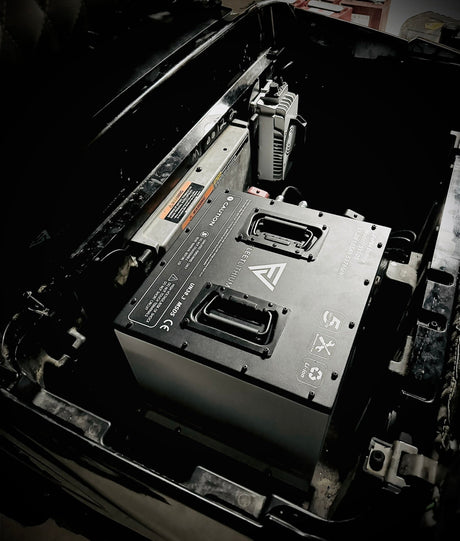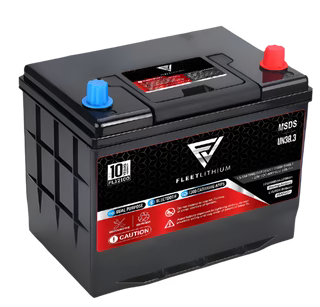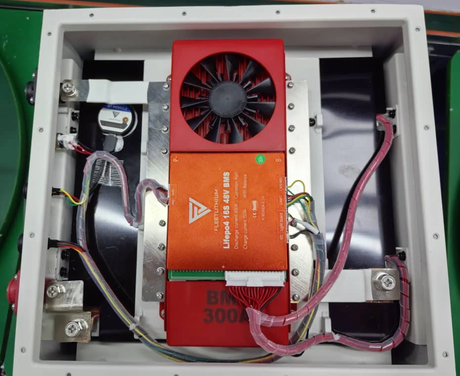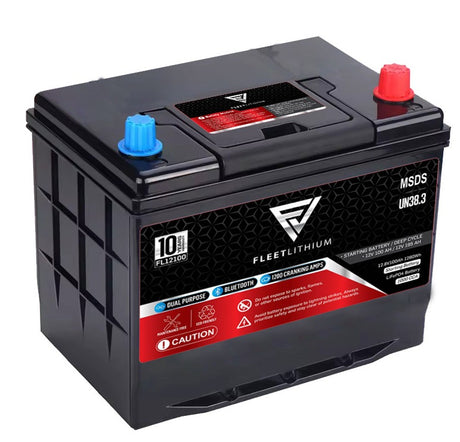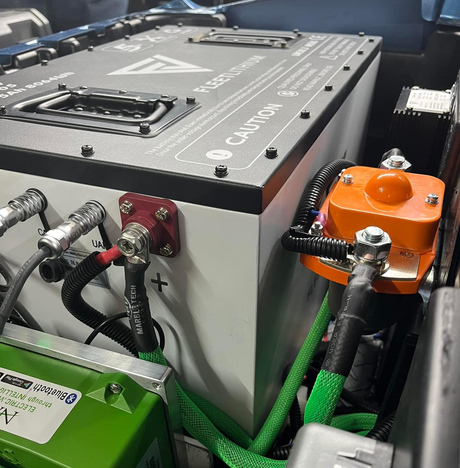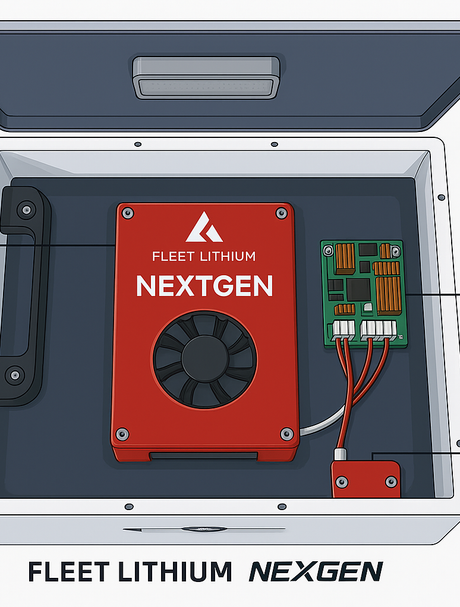Current Safety Features Available in Lithium Batteries: Why They Matter (Including Fire Extinguishers)
Lithium-ion batteries have become the gold standard for powering everything from smartphones and laptops to electric vehicles (EVs) and off-grid solar systems. However, as the demand for these energy-dense batteries increases, safety concerns are also top of mind. Despite being far safer than some older battery technologies, lithium batteries still carry risks related to overcharging, short circuits, and overheating.
Fortunately, modern lithium batteries come equipped with an array of safety features designed to mitigate these risks, ensuring their safe operation in even the most demanding environments. Some of these features, such as built-in fire extinguishers, might surprise you—but they play a crucial role in keeping both users and the environment safe. In this blog post, we will dive into the essential safety features of lithium batteries, their importance, and whether you’ll need them for your specific use case.
1. Battery Management System (BMS)
The heart of safety in a lithium battery is the Battery Management System (BMS). This system monitors and manages various aspects of battery performance to ensure safe and efficient operation.
Key Functions of the BMS:
- Overcharge Protection: Prevents the battery from being charged beyond its maximum voltage, which could lead to overheating or even explosion.
- Overdischarge Protection: Ensures the battery doesn’t discharge below a certain level, which could damage its cells and reduce its lifespan.
- Thermal Management: Monitors the temperature of the battery and prevents it from overheating, a key cause of fires.
- Cell Balancing: Ensures that all the individual cells within the battery remain balanced in terms of charge level, which extends the battery's lifespan and performance.
- Short Circuit Protection: Detects and isolates a short circuit from the battery, preventing it from damaging the cells or causing other safety issues.
Importance: The BMS is arguably the most crucial safety feature of any lithium battery. It ensures the battery operates within its optimal parameters, preventing damage, fire, or even catastrophic failure. Fleet Lithium products, for example, are equipped with advanced BMS to enhance performance and safety【69†source】.
2. Built-In Fire Extinguishers
This might sound surprising, but some lithium batteries come equipped with built-in fire extinguishers. While lithium-ion batteries are generally safe, they can catch fire if they are overcharged, overheated, or damaged.
How Fire Extinguishers in Lithium Batteries Work:
- The fire extinguishing system is usually activated in the event of extreme overheating or a battery failure, helping to suppress fires before they spread.
- These systems are designed to work without human intervention, making them a crucial feature for high-risk applications like electric vehicles, marine vessels, or off-grid solar systems where battery failure could have serious consequences.
Importance: While you may not need a fire extinguisher for everyday, low-risk applications (like using a laptop or phone), Fleet Lithium batteries used in more demanding setups (e.g., RVs, boats, and solar systems) often benefit from these systems. The extra layer of protection gives users peace of mind, knowing the battery will automatically react if it detects dangerous conditions【68†source】.
3. Thermal Regulation (Heated Cells)
Thermal regulation is essential for ensuring the lithium battery doesn’t overheat, which can lead to thermal runaway—a chemical reaction within the battery that can cause it to catch fire or even explode.
How Thermal Regulation Works:
- Lithium batteries, especially those used in cold environments, are equipped with heated cells that prevent the battery from freezing in low temperatures. This feature ensures that the battery remains within an optimal temperature range for charging and discharging.
- It also helps to prevent overheating in warmer environments, ensuring that the battery continues to operate safely, even in demanding conditions.
Importance: Thermal regulation is especially crucial for batteries used in electric vehicles, marine vessels, and off-grid applications where extreme temperatures are a concern. It ensures that the battery performs efficiently and safely, regardless of the weather conditions. Fleet Lithium batteries, for instance, are equipped with these features to maintain peak performance even in fluctuating environmental conditions【70†source】.
4. Low Voltage Protection
Lithium batteries are highly sensitive to deep discharge, and running them too low can damage their cells irreparably. Low voltage protection is a feature that ensures the battery doesn’t discharge below a certain threshold.
How It Works:
- When the battery’s voltage reaches a certain level, the protection system automatically shuts off the power to prevent further discharge. This helps to preserve the integrity of the battery and extend its life.
Importance: This feature is essential for ensuring that your Fleet Lithium battery or any lithium-based product doesn’t suffer from long-term damage. It’s particularly important for solar energy systems and off-grid applications, where prolonged use without proper monitoring could result in an irreparable battery.
5. Low Temperature Charging Cutoff
Lithium batteries don’t perform well in freezing temperatures. To prevent damage from charging in cold weather, many batteries come with a low-temperature charging cutoff.
How It Works:
- The battery automatically stops charging if the temperature drops below a safe level (usually around 0°C or 32°F), preventing the cells from becoming damaged by the formation of lithium metal during charging.
Importance: If you plan on using lithium batteries in colder environments—such as in RVs, boats, or remote solar systems in winter—this feature is indispensable. Fleet Lithium batteries come with this cutoff feature, ensuring they are safe and efficient even during the winter months【69†source】【70†source】.
6. Jump-Start on Low Voltage
If the battery voltage drops too low (often due to a deep discharge), some lithium batteries come with a jump-start feature, allowing the battery to be revived by applying a small external voltage.
How It Works:
- This feature temporarily increases the battery voltage to a safe level, enabling it to charge normally once again. It’s especially useful in applications where the battery is subject to occasional deep discharges.
Importance: This feature ensures that you don’t have to completely replace the battery if it’s accidentally discharged too far. It’s especially useful for off-grid RV systems and marine applications where deep discharges can be more common.
7. Overcurrent Protection
Overcurrent protection prevents excessive current flow that could lead to overheating or damaging the battery cells. This feature ensures that the battery is protected from sudden surges in power demand.
How It Works:
- The system automatically disconnects or regulates the current to prevent the battery from being overloaded. This is important for high-demand applications like electric vehicles and solar storage systems.
Importance: Overcurrent protection is crucial for Fleet Lithium batteries in vehicles, heavy machinery, or industrial applications, where power demands can suddenly increase and potentially damage the battery.
Conclusion: The Importance of Safety Features in Lithium Batteries
Lithium-ion batteries are among the safest and most efficient energy storage solutions available today. The advanced safety features, from Battery Management Systems (BMS) to fire extinguishers, help protect users, prevent battery damage, and ensure optimal performance over time.
For Fleet Lithium, safety is a top priority. Whether it's a marine battery for a boat, a golf cart battery, or solar storage for an off-grid system, our batteries come equipped with the latest safety features designed to keep both users and the environment safe. These safety mechanisms are crucial, especially in high-stakes applications where a malfunction could lead to costly damage or safety risks.
With Fleet Lithium, you’re not just investing in high-performance batteries, but also in a safer, more reliable energy solution. Visit Fleet Lithium’s product page to explore our range of batteries and learn more about the safety features that set us apart.


